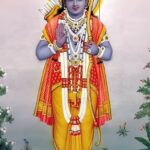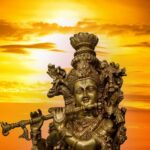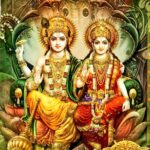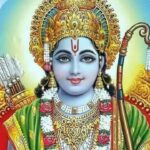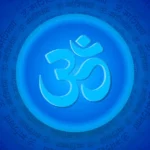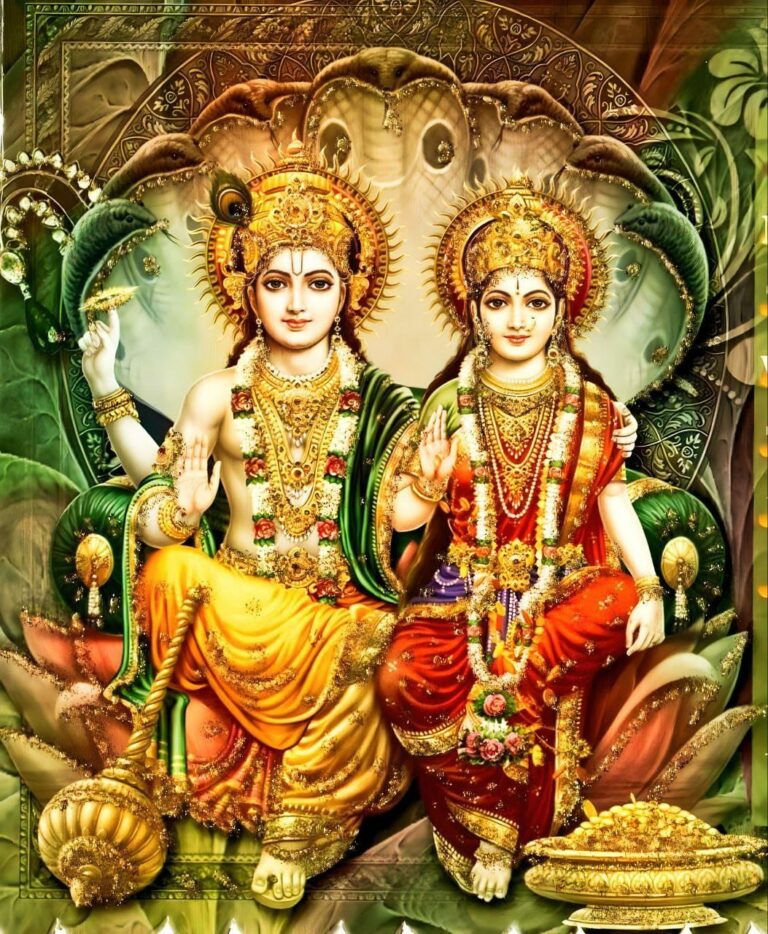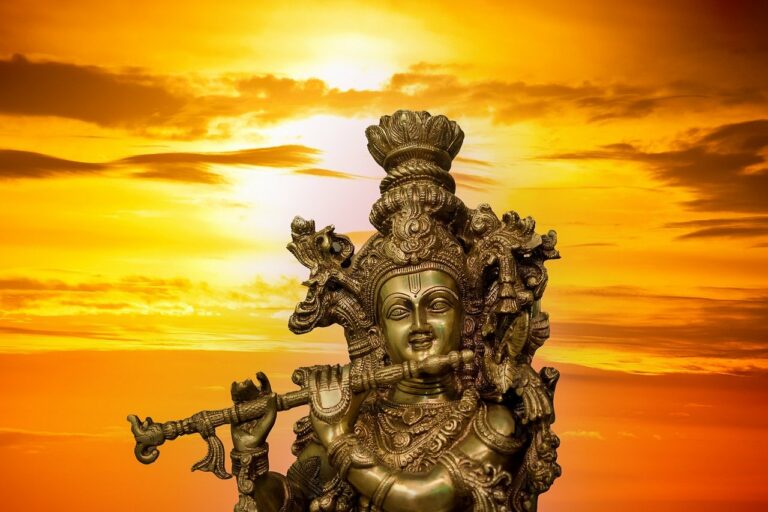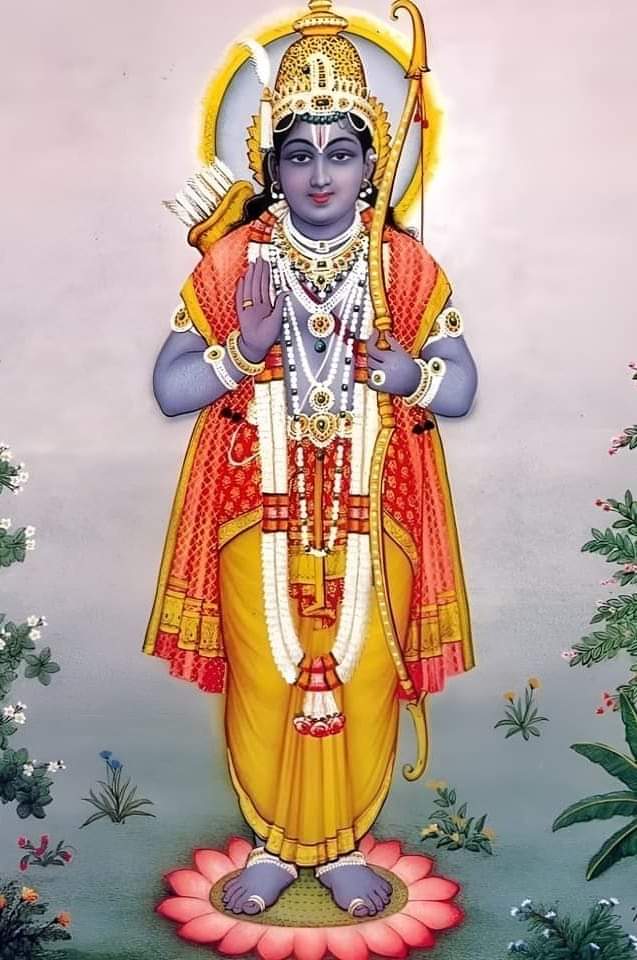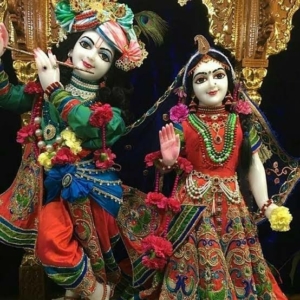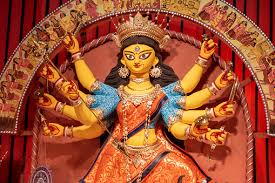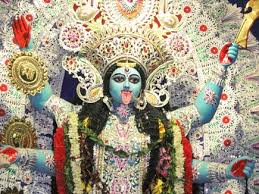।। श्रीहरि: ।।
ऋग्वेद में लगभग एक हजार सूक्त हैं, यानी लगभग दस हजार मन्त्र हैं। चारों वेदों में करीब बीस हजार से ज्यादा मंत्र हैं और इन मन्त्रों के रचयिता कवियों को हम ऋषि कहते हैं। बाकी तीन वेदों के मन्त्रों की तरह ऋग्वेद के मन्त्रों की रचना में भी अनेकानेक ऋषियों का योगदान रहा है। पर इनमें भी सात ऋषि ऐसे हैं जिनके कुलों में मन्त्र रचयिता ऋषियों की एक लम्बी परम्परा रही। ये कुल परंपरा ऋग्वेद के सूक्त दस मंडलों में संग्रहित हैं और इनमें दो से सात यानी छह मंडल ऐसे हैं जिन्हें हम परम्परा से वंशमंडल कहते हैं क्योंकि इनमें छह ऋषिकुलों के ऋषियों के मन्त्र इकट्ठा कर दिए गए हैं।
आकाश में सात तारों का एक मंडल नजर आता है उन्हें सप्तर्षियों का मंडल कहा जाता है। उक्त मंडल के तारों के नाम भारत के महान सात संतों के नाम पर ही रखे गए हैं। वेदों में उक्त मंडल की स्थिति, गति, दूरी और विस्तार की विस्तृत चर्चा मिलती है। प्रत्येक मनवंतर में अगल-अगल सप्तऋषि हुए हैं। यहां प्रस्तुत है वैवस्वत मनु के काल के सप्तऋषियों का परिचय।
सप्तऋषि के पहले ऋषि जिनके पास थी कामधेनु गाय वशिष्ठ-
राजा दशरथ के कुलगुरु ऋषि वशिष्ठ को कौन नहीं जानता। ये दशरथ के चारों पुत्रों के गुरु थे। वशिष्ठ के कहने पर दशरथ ने अपने चारों पुत्रों को ऋषि विश्वामित्र के साथ आश्रम में राक्षसों का वध करने के लिए भेज दिया था।
कामधेनु गाय के लिए वशिष्ठ और विश्वामित्र में युद्ध भी हुआ था। वशिष्ठ ने राजसत्ता पर अंकुश का विचार दिया तो उन्हींर के कुल के मैत्रावरूण वशिष्ठ ने सरस्वती नदी के किनारे सौ सूक्त एक साथ रचकर नया इतिहास बनाया।
दूसरे महान ऋषि मंत्र शक्ति के ज्ञाता और स्वर्ग निर्माता विश्वामित्र-
ऋषि होने के पूर्व विश्वामित्र राजा थे और ऋषि वशिष्ठ से कामधेनु गाय को हड़पने के लिए उन्होंने युद्ध किया था, लेकिन वे हार गए। इस हार ने ही उन्हें घोर तपस्या के लिए प्रेरित किया। विश्वामित्र की तपस्या और मेनका द्वारा उनकी तपस्या भंग करने की कथा जगत प्रसिद्ध है। विश्वामित्र ने अपनी तपस्या के बल पर त्रिशंकु को सशरीर स्वर्ग भेज दिया था। लेकिन स्वर्ग में उन्हें जगह नहीं मिली तो विश्वामित्र ने एक नए स्वर्ग की रचना कर डाली थी। इस तरह ऋषि विश्वामित्र के असंख्य किस्से हैं।
माना जाता है कि हरिद्वार में आज जहां शांतिकुंज हैं उसी स्थान पर विश्वामित्र ने घोर तपस्या करके इंद्र से रुष्ठ होकर एक अलग ही स्वर्ग लोक की रचना कर दी थी। विश्वामित्र ने इस देश को ऋचा बनाने की विद्या दी और गायत्री मन्त्र की रचना की जो भारत के हृदय में और जिह्ना पर हजारों सालों से आज तक अनवरत निवास कर रहा है।
तीसरे महान ऋषि ने बताया ज्ञान-विज्ञान तथा अनिष्ट-निवारण का मार्ग कण्व-
माना जाता है इस देश के सबसे महत्वपूर्ण यज्ञ सोमयज्ञ को कण्वों ने व्यवस्थित किया। कण्व वैदिक काल के ऋषि थे। इन्हीं के आश्रम में हस्तिनापुर के राजा दुष्यंत की पत्नी शकुंतला एवं उनके पुत्र भरत का पालन-पोषण हुआ था।
१०३ सूक्तवाले ऋग्वेद के आठवें मण्डल के अधिकांश मन्त्र महर्षि कण्व तथा उनके वंशजों तथा गोत्रजों द्वारा दृष्ट हैं। कुछ सूक्तों के अन्य भी द्रष्ट ऋषि हैं, किंतु ‘प्राधान्येन व्यपदेशा भवन्ति’ के अनुसार महर्षि कण्व अष्टम मण्डल के द्रष्टा ऋषि कहे गए हैं। इनमें लौकिक ज्ञान-विज्ञान तथा अनिष्ट-निवारण सम्बन्धी उपयोगी मन्त्र हैं।
सोनभद्र में जिला मुख्यालय से आठ किलो मीटर की दूरी पर कैमूर श्रृंखला के शीर्ष स्थल पर स्थित कण्व ऋषि की तपस्थली है जो कंडाकोट नाम से जानी जाती है।
चौथे महान ऋषि जिन्होंने दुनिया को बताया विमान उड़ाना भारद्वाज-
वैदिक ऋषियों में भारद्वाज-ऋषि का उच्च स्थान है। भारद्वाज के पिता बृहस्पति और माता ममता थीं। भारद्वाज ऋषि राम के पूर्व हुए थे, लेकिन एक उल्लेख अनुसार उनकी लंबी आयु का पता चलता है कि वनवास के समय श्रीराम इनके आश्रम में गए थे, जो ऐतिहासिक दृष्टि से त्रेता-द्वापर का सन्धिकाल था। माना जाता है कि भरद्वाजों में से एक भारद्वाज विदथ ने दुष्यन्त पुत्र भरत का उत्तराधिकारी बन राजकाज करते हुए मन्त्र रचना जारी रखी।
ऋषि भारद्वाज के पुत्रों में १० ऋषि ऋग्वेद के मन्त्रदृष्टा हैं और एक पुत्री जिसका नाम ‘रात्रि’ था, वह भी रात्रि सूक्त की मन्त्रदृष्टा मानी गई हैं। ॠग्वेद के छठे मण्डल के द्रष्टा भारद्वाज ऋषि हैं। इस मण्डल में भारद्वाज के ७६५ मन्त्र हैं। अथर्ववेद में भी भारद्वाज के २३ मन्त्र मिलते हैं। ‘भारद्वाज-स्मृति’ एवं ‘भारद्वाज-संहिता’ के रचनाकार भी ऋषि भारद्वाज ही थे।
ऋषि भारद्वाज ने ‘यन्त्र-सर्वस्व’ नामक बृहद् ग्रन्थ की रचना की थी। इस ग्रन्थ का कुछ भाग स्वामी ब्रह्ममुनि ने ‘विमान-शास्त्र’ के नाम से प्रकाशित कराया है। इस ग्रन्थ में उच्च और निम्न स्तर पर विचरने वाले विमानों के लिए विविध धातुओं के निर्माण का वर्णन मिलता है।
पांचवें महान ऋषि पारसी धर्म संस्थापक कुल के और जिन्होंने बताया खेती करना-
५. अत्रि-
ऋग्वेद के पंचम मण्डल के द्रष्टा महर्षि अत्रि ब्रह्मा के पुत्र, सोम के पिता और कर्दम प्रजापति व देवहूति की पुत्री अनुसूया के पति थे। अत्रि जब बाहर गए थे तब त्रिदेव अनसूया के घर ब्राह्मण के भेष में भिक्षा माँगने लगे और अनुसूया से कहा कि जब आप अपने संपूर्ण वस्त्र उतार देंगी तभी हम भिक्षा स्वीकार करेंगे, तब अनुसूया ने अपने सतित्व के बल पर उक्त तीनों देवों को अबोध बालक बनाकर उन्हें भिक्षा दी। माता अनुसूया ने देवी सीता को पतिव्रत का उपदेश दिया था।
अत्रि ऋषि ने इस देश में कृषि के विकास में पृथु और ऋषभ की तरह योगदान दिया था। अत्रि लोग ही सिन्धु पार करके पारस (आज का ईरान) चले गए थे, जहाँ उन्होंने यज्ञ का प्रचार किया। अत्रियों के कारण ही अग्निपूजकों के धर्म पारसी धर्म का सूत्रपात हुआ।
अत्रि ऋषि का आश्रम चित्रकूट में था। मान्यता है कि अत्रि-दम्पति की तपस्या और त्रिदेवों की प्रसन्नता के फलस्वरूप विष्णु के अंश से महायोगी दत्तात्रेय, ब्रह्मा के अंश से चन्द्रमा तथा शंकर के अंश से महामुनि दुर्वासा महर्षि अत्रि एवं देवी अनुसूया के पुत्र रूप में जन्मे। ऋषि अत्रि पर अश्विनीकुमारों की भी कृपा थी।
छटवें ऋषि शास्त्रीय संगीत के रचनाकार वामदेव-
वामदेव ने इस देश को सामगान (अर्थात् संगीत) दिया। वामदेव ऋग्वेद के चतुर्थ मंडल के सूत्तद्रष्टा, गौतम ऋषि के पुत्र तथा जन्मत्रयी के तत्ववेत्ता माने जाते हैं। भरत मुनि द्वारा रचित भरत नाट्य शास्त्र सामवेद से ही प्रेरित है। हजारों वर्ष पूर्व लिखे गए सामवेद में संगीत और वाद्य यंत्रों की संपूर्ण जानकारी मिलती है।
वामदेव जब मां के गर्भ में थे तभी से उन्हें अपने पूर्वजन्म आदि का ज्ञान हो गया था। उन्होंने सोचा, मां की योनि से तो सभी जन्म लेते हैं और यह कष्टकर है, अत: मां का पेट फाड़ कर बाहर निकलना चाहिए। वामदेव की मां को इसका आभास हो गया। अत: उसने अपने जीवन को संकट में पड़ा जानकर देवी अदिति से रक्षा की कामना की। तब वामदेव ने इंद्र को अपने समस्त ज्ञान का परिचय देकर योग से श्येन पक्षी का रूप धारण किया तथा अपनी माता के उदर से बिना कष्ट दिए बाहर निकल आए।
सातवें ऋषि गुरुकुल परंपरा के अग्रज शौनक-
शौनक ने दस हजार विद्यार्थियों के गुरुकुल को चलाकर कुलपति का विलक्षण सम्मान हासिल किया और किसी भी ऋषि ने ऐसा सम्मान पहली बार हासिल किया। वैदिक आचार्य और ऋषि जो शुनक ऋषि के पुत्र थे।
फिर से बताएं तो वशिष्ठ, विश्वामित्र, कण्व, भरद्वाज, अत्रि, वामदेव और शौनक- ये हैं वे सात ऋषि जिन्होंने इस देश को इतना कुछ दे डाला कि कृतज्ञ देश ने इन्हें आकाश के तारामंडल में बिठाकर एक ऐसा अमरत्व दे दिया कि सप्तर्षि शब्द सुनते ही हमारी कल्पना आकाश के तारामंडलों पर टिक जाती है।
इसके अलावा मान्यता हैं कि अगस्त्य, कष्यप, अष्टावक्र, याज्ञवल्क्य, कात्यायन, ऐतरेय, कपिल, जेमिनी, गौतम आदि सभी ऋषि उक्त सात ऋषियों के कुल के होने के कारण इन्हें भी वही दर्जा प्राप्त है।
वेदों का अध्ययन करने पर जिन सात ऋषियों या ऋषि कुल के नामों का पता चलता है वे नाम क्रमश: इस प्रकार हैं-
१.वशिष्ठ,
२.विश्वामित्र,
३.कण्व,
४.भारद्वाज,
५.अत्रि,
६.वामदेव और
७.शौनक।
पुराणों में सप्त ऋषि के नाम पर भिन्न-भिन्न नामावली मिलती है। विष्णु पुराण अनुसार इस मन्वन्तर के सप्तऋषि इस प्रकार है-
वशिष्ठकाश्यपो यात्रिर्जमदग्निस्सगौत।
विश्वामित्रभारद्वजौ सप्त सप्तर्षयोभवन्।।
अर्थात् सातवें मन्वन्तर में सप्तऋषि इस प्रकार हैं-
१. वशिष्ठ,
२. कश्यप,
३. अत्रि,
४. जमदग्नि,
५. गौतम,
६. विश्वामित्र और
७. भारद्वाज।
इसके अलावा पुराणों की अन्य नामावली इस प्रकार है-
ये क्रमशः केतु, पुलह, पुलस्त्य, अत्रि, अंगिरा, वशिष्ट तथा मारीचि है।
महाभारत में सप्तर्षियों की दो नामावलियां मिलती हैं। एक नामावली में कश्यप, अत्रि, भारद्वाज, विश्वामित्र, गौतम, जमदग्नि और वशिष्ठ के नाम आते हैं तो दूसरी नामावली में पांच नाम बदल जाते हैं।
दैकश्यप और वशिष्ठ वहीं रहते हैं पर बाकी के बदले मरीचि, अंगिरस, पुलस्त्य, पुलह और क्रतु नाम आ जाते हैं। कुछ पुराणों में कश्यप और मरीचि को एक माना गया है तो कहीं कश्यप और कण्व को पर्यायवाची माना गया है। ।। ॐ नमो नारायणाय ।।
, Srihari :.
There are about one thousand Suktas in the Rigveda, that is, there are about ten thousand mantras. There are more than twenty thousand mantras in the four Vedas and we call the creator poets of these mantras as sages. Like the mantras of the remaining three Vedas, many sages have also contributed to the creation of the mantras of the Rigveda. But among them, there are seven sages who had a long tradition of the creators of mantra in the clans. These total traditions are stored in the ten mandals of the Rigveda and there are two to seven mandals, which we call the tradition of the tradition because in these six mantras of sages of six Rishikulas have been collected.
A circle of seven stars is seen in the sky, he is called the mandal of the Saptarishis. The stars of the said division have been named after the great seven saints of India. A detailed discussion of the status, speed, distance and expansion of the said division is found in the Vedas. Every Manavantar has been in the forefront. Here is the introduction of the Saptarishis of the era of Vaivaswat Manu.
The first sage of Saptarishi who had Kamadhenu cow Vashistha-
Who does not know the Rishi Vasistha of King Dasharatha. He was the guru of the four sons of Dasaratha. At the behest of Vashistha, Dasharatha sent all four of his sons to the ashram with sage Vishwamitra to kill the demons.
There was also a war between Vashistha and Vishwamitra for Kamadhenu cow. When Vashistha gave the idea of curbing the state, Maitravarun Vashistha of the same family created a new history by creating a hundred Sukta together on the banks of the Saraswati river.
Vishwamitra, a knowledgeable and heaven manufacturer of the second great sage mantra power-
Before being a sage, Vishwamitra was the king and he fought to grab Kamadhenu cow with Rishi Vasistha, but he lost. This defeat inspired him for severe penance. The story of Vishwamitra’s penance and Maneka breaking her penance is famous. Vishwamitra sent hung to heaven on the strength of his penance. But if he did not find a place in heaven, Vishwamitra composed a new heaven. In this way there are innumerable stories of sage Vishwamitra.
It is believed that at the same place where there is Shantikunj in Haridwar, Vishwamitra did auspicious penance and created a different heaven and created a different heaven. Vishwamitra gave this country to make Richa and composed the Gayatri Mantra which has been residing in India’s heart and Jihna for thousands of years till date.
The third great sage told that the path of knowledge-science and negative-nine
It is believed that the most important sacrifice of this country was organized by the samayagya. Kanva was the sage of the Vedic period. Shakuntala, wife of King Dushyant of Hastinapur and his son Bharata were raised in his ashram.
Most of the eighth mandala of the Rigveda with 103 Suktas is seen by Maharishi Kanva and his descendants and gotrajas. There are other seers of some Suktas, but according to ‘pradhanyena vyapadesha bhavanti’, the seer of Maharishi Kanva is said to be the seer of the eighth Mandala. These include useful mantras regarding secular knowledge and undesirable relief.
In Sonbhadra, at a distance of eight km from the district headquarters, there is a tapasthali of Kanva Rishi located at the top site of the Kaimur series, which is known as Kandakot.
The fourth great sage who told the world to fly aircraft Bhardwaj-
Bhardwaj-Rishi has a high position among the Vedic sages. Bhardwaj’s father was Jupiter and mother Mamta. Bhardwaj Rishi was before Rama, but according to a mention, his long life is revealed that Sri Ram went to his ashram at the time of exile, which was historically the manner of Treta-Dwapar. It is believed that Bhardwaj Vidath, one of the Bhardwajas, continued to create a mantra by becoming the successor of Dushyant son Bharata.
Among the sons of Rishi Bhardwaj, 10 sages are the mantras of the Rigveda and a daughter named ‘Night’, she is also considered the mantra of the night Sukta. Bhardwaj is the sage Bhardwaj of the sixth circle of the age. There are 65 mantras of Bhardwaj in this board. In the Atharvaveda also, 23 mantras of Bhardwaj are found. The creators of ‘Bhardwaj-Smriti’ and ‘Bhardwaj-Sahana’ were also Rishi Bhardwaj.
Rishi Bhardwaj composed a large book called ‘Yantra-Saravasva’. Some part of this book has been published by Swami Brahmamuni in the name of ‘Vimana-Shastra’. This book describes the manufacture of diverse metals for aircraft wandering at high and low levels.
The fifth great sage Parsi religion founder Kul and who told farming-
5. Atri The seer of the Pancham Mandal of the Rigveda was the son of Maharishi Atri Brahma, the father of Som and the husband of Kardam Prajapati and the daughter of Devahuti Anusuya. When Atri went out, Tridev started asking for alms in the disguise of Brahmin’s house and told Anusuya that only when you take off your entire clothes, only then we will accept alms Gave them alms. Mata Anusuya preached to Goddess Sita.
Atri Rishi contributed like Prithu and Rishabh in the development of agriculture in this country. Atri people crossed the Indus and went to Paras (today’s Iran), where they propagated the yagna. It was due to the atmosphere that the religion of the fire, the Parsi religion of the fire, came to the fore.
The ashram of the sage Atri was in Chitrakoot. It is believed that the great yogi Dattatreya from the part of Vishnu as a result of the joy of the three gods and the moon from the part of Brahma and the part of Shankara, Mahamuni Durvasa Maharshi Atri and Devi Anusuya. The Ashwini Kumaras also had mercy on Rishi Atri.
Vamdev, the creator of the sixth sage classical music-
Vamdev gave this country Samagan (ie music). Vamdev is considered to be the Suttadrashta of the fourth mandal of the Rigveda, the son of Gautama Rishi and the elements of the birthplace. Bharata Natya Shastra composed by Bharat Muni is inspired by Samaveda. Complete information about music and musical instruments is found in the Samaveda written thousands of years ago.
When Vamdev was in the mother’s womb, he had become aware of his previous birth etc. They thought, everyone is born from the mother’s vagina and it is painful, so the mother’s stomach should be tearing out and going out. Vamdev’s mother realized this. Therefore, he wished Goddess Aditi, knowing his life in trouble. Then Vamdev, by introducing all his knowledge to Indra, took the form of a Shen bird with yoga and came out from his mother’s abdomen without any trouble.
Shaunak, the forefather of the seventh sage Gurukul tradition-
Shaunak won the unique honor of the Vice Chancellor by running the Gurukul of ten thousand students and any sage got such an honor for the first time. Vedic Acharya and Rishi who was the son of Shunak Rishi.
Tell me again, Vashistha, Vishwamitra, Kanva, Bhardwaj, Atri, Vamdev and Shaunak- are the seven sages who gave so much to this country that the grateful country gave them such immortality by sitting in the sky of the sky that he listened to the word Saptarshi Our imagination rests on the constellations of the sky.
Apart from this, it is believed that Agastya, Kashyap, Ashtavakra, Yajnavalkya, Katyayan, Aitareya, Kapil, Gemini, Gautam etc. are all the same status due to the total of the said seven sages.
On studying the Vedas, the names of the seven sages or the sage clan are revealed are the names respectively-
1. Vasishta, 2. Vishvamitra, 3. Kanva, 4. Bhardwaj, 5. Atri, 6. Vamdeva and 7. Shaunak.
In the Puranas, different rolls are found in the name of Sapta Rishi. According to Vishnu Purana, the Saptarishi of this manvantar is as follows-
Vasishta Kashyapa Yatri Jamadagnissagauta. Viswamitra and Bharadvaja were seven sages.
That is, the seven sages in the seventh manvantara are as follows:
1. Vashishtha, 2. Kashyap, 3. Atri, 4. Jamadagni, 5. Gautam, 6. Vishvamitra and 7. Bharadwaj.
Apart from this, other rolls of Puranas are as follows-
It is Ketu, Pulah, Pulastya, Atri, Angira, Vashisht and Marichi respectively.
In the Mahabharata, two nominations of Saptarshi are found. In one name, the names of Kashyapa, Atri, Bhardwaj, Vishwamitra, Gautam, Jamadagni and Vashistha are changed, and in the second name, five names change.
Daikashyapa and Vashistha live there, but instead of the rest of Marichi, Angiras, Pulastya, Pulah and Kratu come. In some Puranas, Kashyapa and Marichi are considered one, and somewhere Kashyap and Kanva are considered synonymous. , Om Namo Naraynay ..


